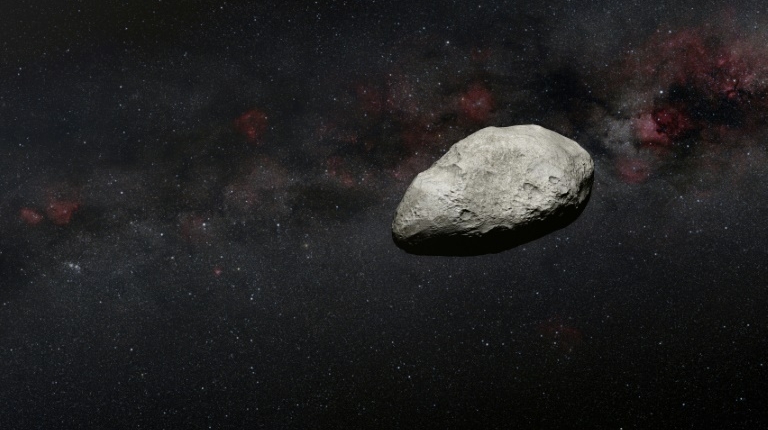A large asteroid named 2023 DZ2 will pass safely between Earth and the Moon on Saturday. The asteroid’s size is estimated to be 40 to 70 metres wide, and it will come within a third of the distance from the Earth to the Moon. The event will be used as a training exercise for planetary defence efforts. The asteroid was first spotted by an observatory in Spain, and the International Asteroid Warning Network will carry out a “rapid characterisation” of 2023 DZ2. The goal is to analyse the asteroid with a range of instruments to find out just how much we can learn about such an asteroid in only a week. The asteroid poses no threat of impact for at least the next 100 years.
Large Asteroid to Safely Zoom Between Earth and Moon in Once-in-a-Decade Event
The European Space Agency has reported that a large asteroid, named 2023 DZ2, will pass safely between Earth and the Moon on Saturday. The estimated size of the asteroid is between 40 to 70 metres (130 to 230 feet) wide, approximately the size of the Parthenon, and large enough to cause significant damage if it were to hit the planet. The asteroid’s close proximity to Earth will serve as a training exercise for planetary defence efforts.
The head of the ESA’s planetary defence office, Richard Moissl, confirmed that at 19:49 GMT on Saturday, the asteroid will be within a third of the distance from the Earth to the Moon. Though he admits it is “very close”, he assured people that there is nothing to worry about.
Small asteroids flying past Earth is common, but asteroids of this size passing so close to Earth occur only about once every 10 years. The asteroid will be passing 175,000 kilometres (109,000 miles) from Earth at a speed of 28,000 kilometres per hour (17,400 miles per hour). In contrast, the Moon is roughly 385,000 kilometres away.
The asteroid was first spotted on February 27 by an observatory in La Palma, one of Spain’s Canary Islands. The International Asteroid Warning Network, endorsed by the UN, will use this opportunity to carry out a “rapid characterisation” of 2023 DZ2, wherein astronomers from around the world will analyse the asteroid with a range of instruments like spectrometers and radars. The purpose is to determine how much we can learn about such an asteroid in only a week and to serve as training for how the network would react to a future threat.
Moissl said that preliminary data suggests 2023 DZ2 is “a scientifically interesting object,” indicating it could be a somewhat unusual type of asteroid. However, more data is required to determine the asteroid’s composition. The asteroid will make another pass close to Earth in 2026, but poses no threat of impact for at least the next 100 years.
This event marks the second asteroid in recent weeks with potential for impact on Earth. Earlier this month, asteroid 2023 DW, a similarly-sized object, was given a one-in-432 chance of hitting Earth on Valentine’s Day in 2046. Further calculations ruled out any chance of impact, and Moissl said that 2023 DW is expected to miss Earth by about 4.3 million kilometres.
With NASA’s DART spacecraft, which deliberately slammed into the pyramid-sized asteroid Dimorphos, proving the planet’s defences against such asteroids last year, Earth is no longer defenceless even if such an asteroid were to head our way.
Don’t miss interesting posts on Famousbio









